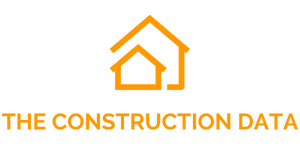
Homes.com: Home Price Growth Slows for 3rd Month
Homes.com, a leading online residential real estate marketplace and part of CoStar Group’s growing suite of digital real estate platforms, released its March 2025 Housing Market Report today. The latest findings reveal a continued moderation in home price growth, providing a nuanced view of shifting dynamics within the U.S. housing sector.
According to preliminary data from Homes.com, home prices rose once again in March, but the pace of that increase has now slowed for the third consecutive month. While still firmly in positive territory, the deceleration in price growth suggests a potential inflection point—one that could favor homebuyers after years of intense competition and historically limited inventory.
A Closer Look at National Price Trends
Based on Homes.com’s analysis of real estate data collected across hundreds of markets, the median U.S. home price rose from $372,000 in March 2024 to $380,000 in March 2025—a $8,000 increase and a 2.2% year-over-year gain. For context, prices rose 2.7% in February and 3.6% in January, indicating a continued but softening upward trend in property valuations.
This marks the 21st consecutive month of year-over-year home price appreciation. The peak of this appreciation cycle occurred in December 2024, when prices jumped by 5.6%. While prices remain historically high, this sustained but cooling growth rate offers a degree of hope for prospective buyers who were previously priced out of the market during more aggressive periods of escalation.
The March findings suggest that although demand remains strong, it is beginning to encounter headwinds—most notably in the form of increasing inventory and slightly reduced mortgage rates.
The Power of Inventory and Rates
Two of the most influential variables in real estate—mortgage rates and inventory levels—shifted in a direction more favorable to buyers during March. First, a modest but meaningful decline in mortgage rates made borrowing more accessible. While not a dramatic drop, even small reductions in interest rates can improve affordability for buyers and increase overall market activity.

Second, the number of homes listed for sale increased across several U.S. markets, expanding the options available to buyers. More inventory means greater competition among sellers, which in turn can slow price growth. When coupled with marginally improved affordability, this trend suggests that the balance of power may be slowly moving away from sellers and toward buyers—particularly in certain regional markets.
“The spring housing market is beginning to show signs of a much-needed thaw,” said Melina Duggal, Senior Director of Market Analytics at CoStar Group and Homes.com. “Buyers are becoming more discerning, and sellers are adjusting expectations. If current trends continue, we may see even more balanced conditions by summer.”
Regional Standouts: Northeast and Midwest Take the Lead
The latest data also underscore important geographic distinctions in housing performance. Markets in the Northeast and Midwest showed the strongest year-over-year price growth in March. Of the top 10 cities with the largest price increases, four were located in the Northeast, and another four were in the Midwest.
Cleveland led the charge, with home prices climbing by more than 10% compared to the same time last year. Other high-performing cities included Chicago, New York, and Pittsburgh. These metros have benefited from a combination of strong demand, relatively affordable price points compared to coastal hubs, and favorable local economic conditions.
By contrast, many markets in the South experienced slower growth or even price declines. Of the 10 cities with the lowest price increases, five were located in Southern states. Notably, four markets posted year-over-year price drops—three of which were in Florida. These included Orlando, Jacksonville, and Tampa, along with San Francisco in California.
Such regional divergence reflects local factors including population shifts, job growth, and inventory surges. In Florida’s case, recent overbuilding in some metros and higher insurance costs may be contributing to the price pullback.
Buyer Sentiment and Market Shifts
While homes are still increasing in value overall, the tempered pace of growth has important implications for both buyers and sellers. For buyers, this environment could be the first in several years where negotiation plays a larger role in the transaction. With more listings to choose from and the prospect of additional supply entering the market in the coming months, buyers may find themselves in a stronger position.
On the other hand, sellers will need to adjust expectations and price competitively. In fast-changing market conditions, sellers who overprice their properties risk longer time on market and potential price reductions.
“The narrative is shifting,” Duggal added. “This is no longer the era of extreme bidding wars and instant closings in every market. Today’s buyers are savvy, and they have more data, better tools, and a growing inventory to work with.”
Homes.com: Powering the Next Generation of Home Search
Behind this data is a platform undergoing a transformation of its own. Homes.com, now the second-largest residential real estate portal in the U.S., has become one of the fastest-growing consumer property search platforms in the country. Since its acquisition by CoStar Group in 2021, Homes.com has leveraged CoStar’s industry-leading data and marketing capabilities to scale its audience and deliver unmatched value to real estate professionals and consumers alike.
In the fourth quarter ending December 31, 2024, the Homes.com Network (which includes Homes.com, the Apartments Network, and the Land Network) attracted 110 million average monthly unique visitors, according to Google Analytics. Consumer brand awareness has also surged, increasing from just 4% to 33% in a single year, thanks in part to CoStar Group’s aggressive marketing campaign that began in February 2024.
Unlike other portals, Homes.com prioritizes the relationship between homeowners and real estate agents. It provides tools that help sellers and their agents promote listings more effectively, increasing exposure and accelerating sales. Internal analyses show that agents who are members of the Homes.com platform win 58% more listings on average than their non-member peers. holistic view of real estate—from residential listings to commercial assets, hospitality performance, and beyond.




